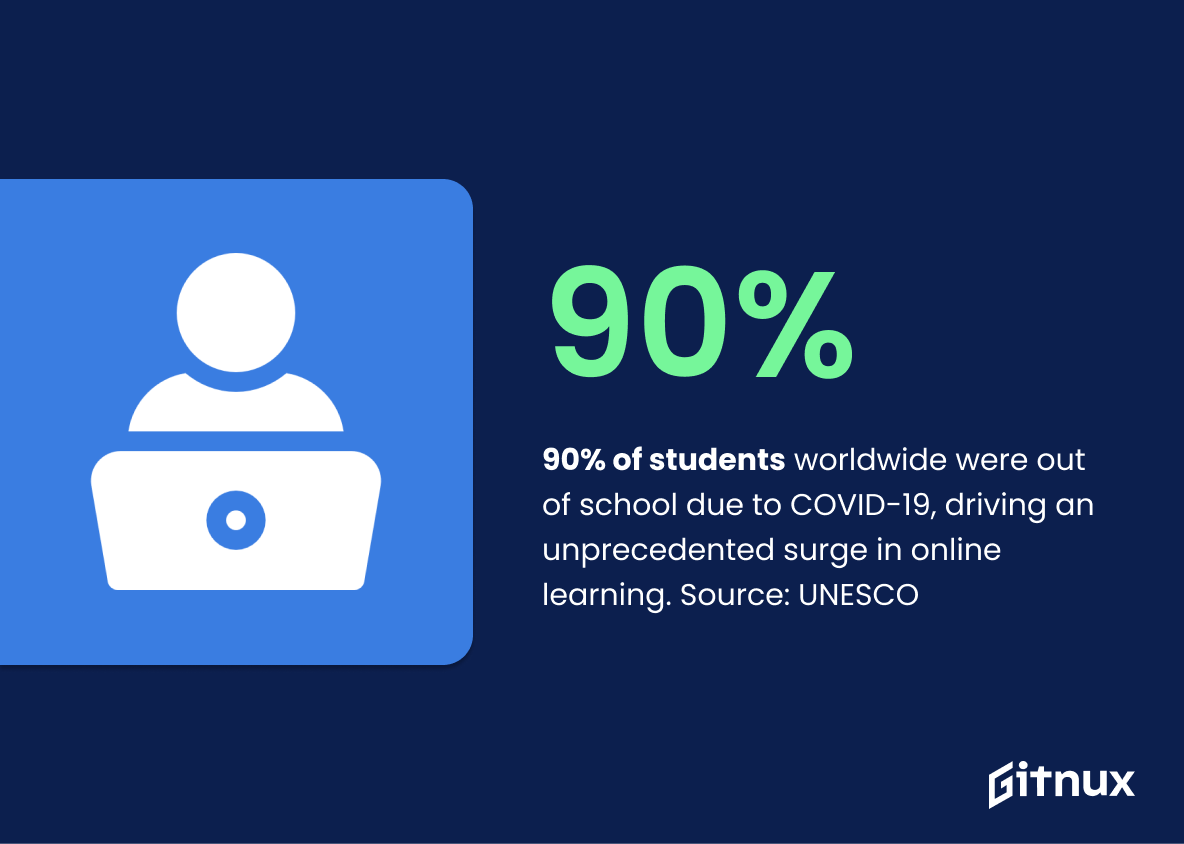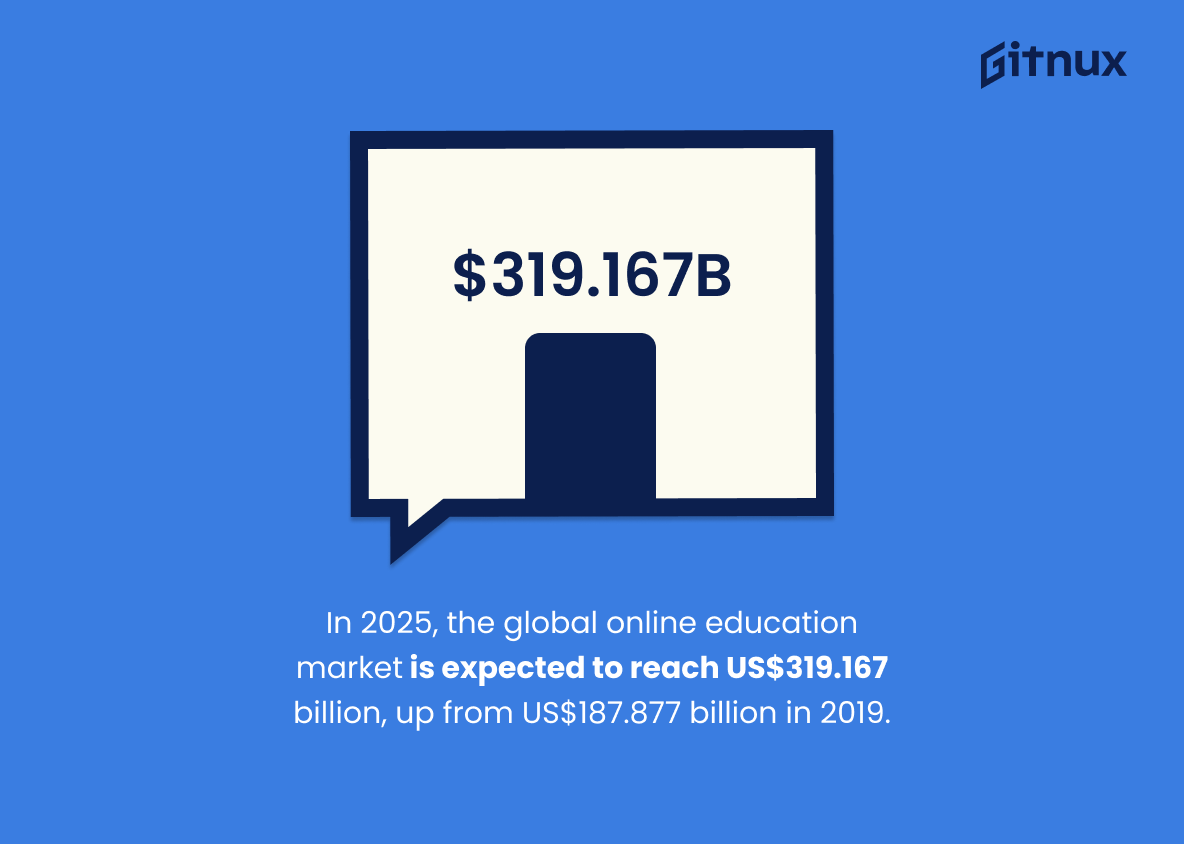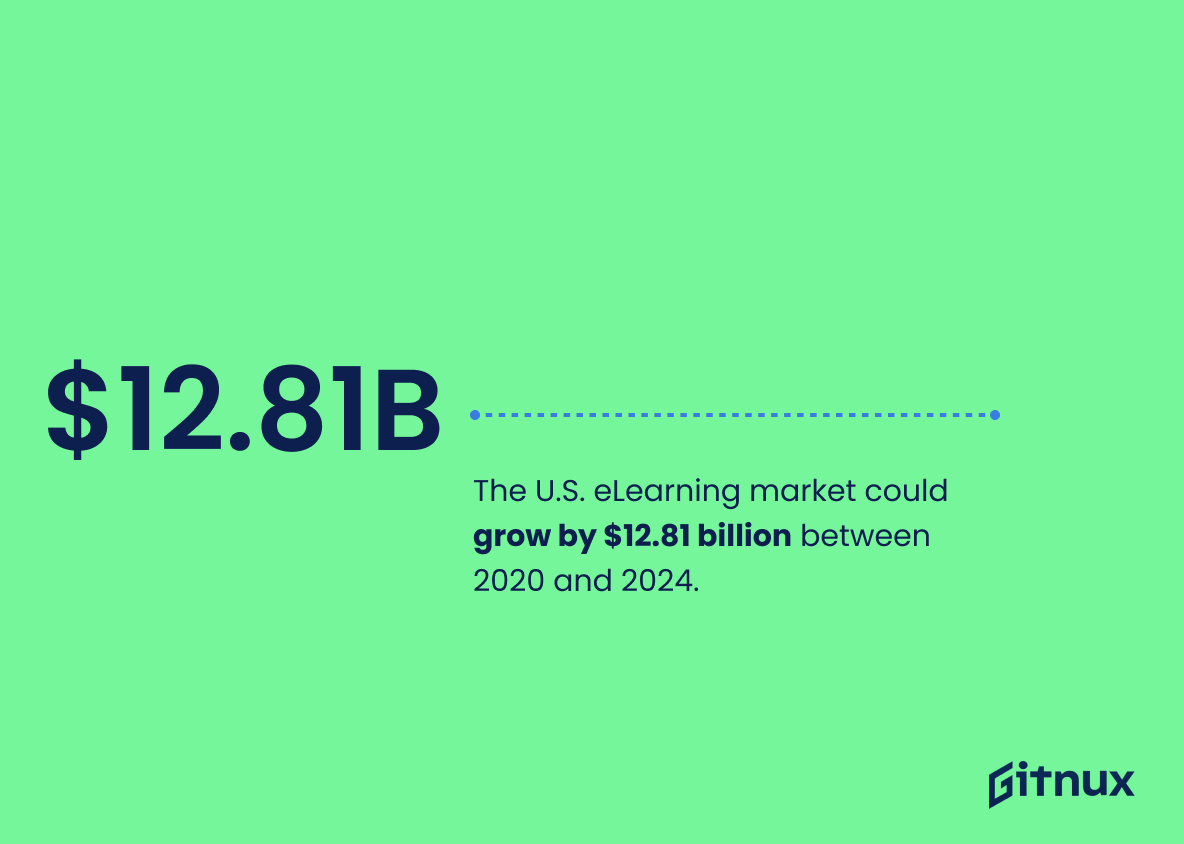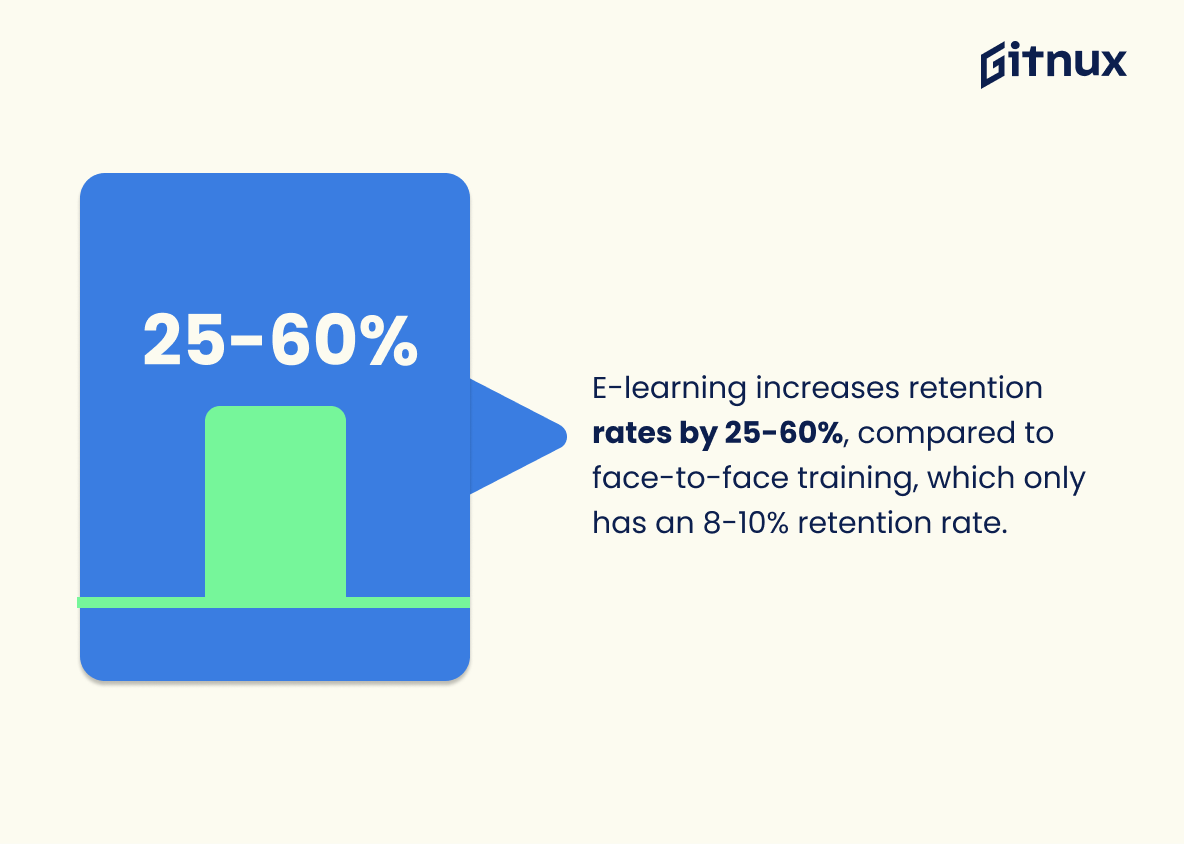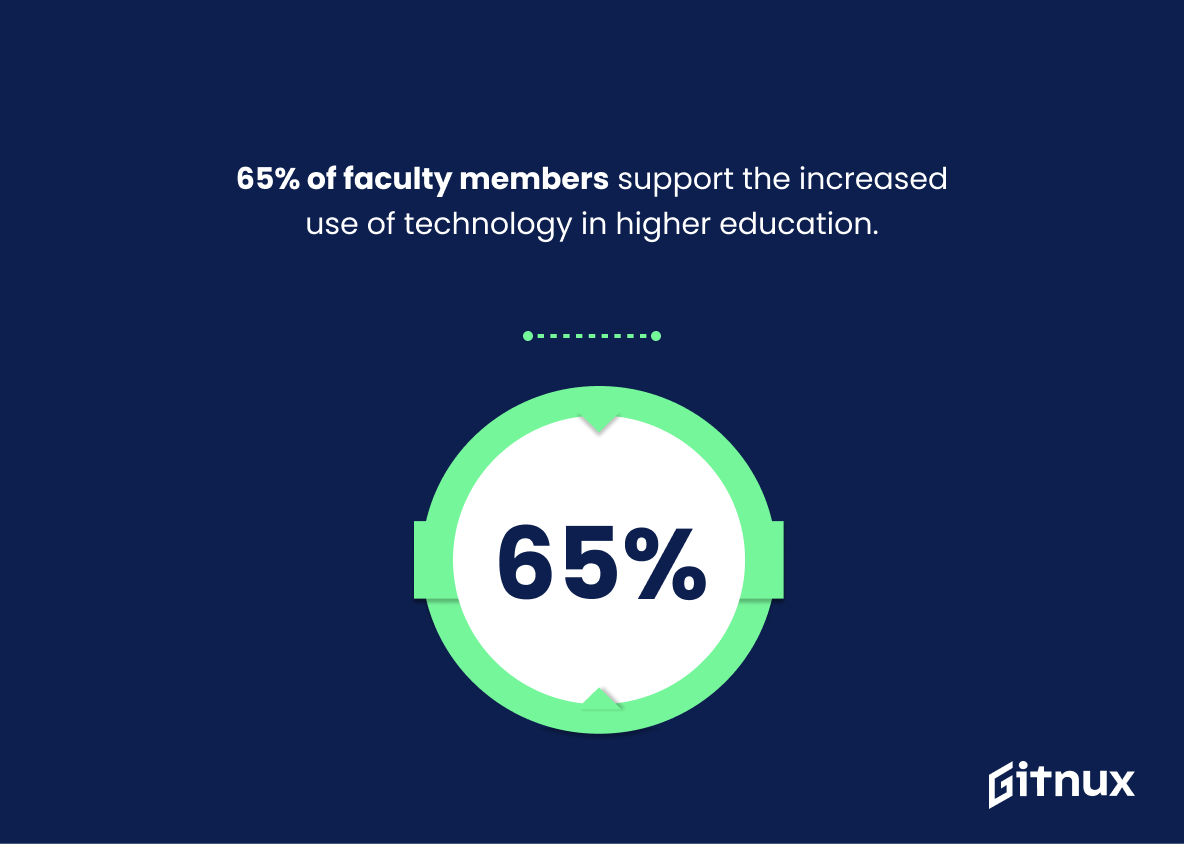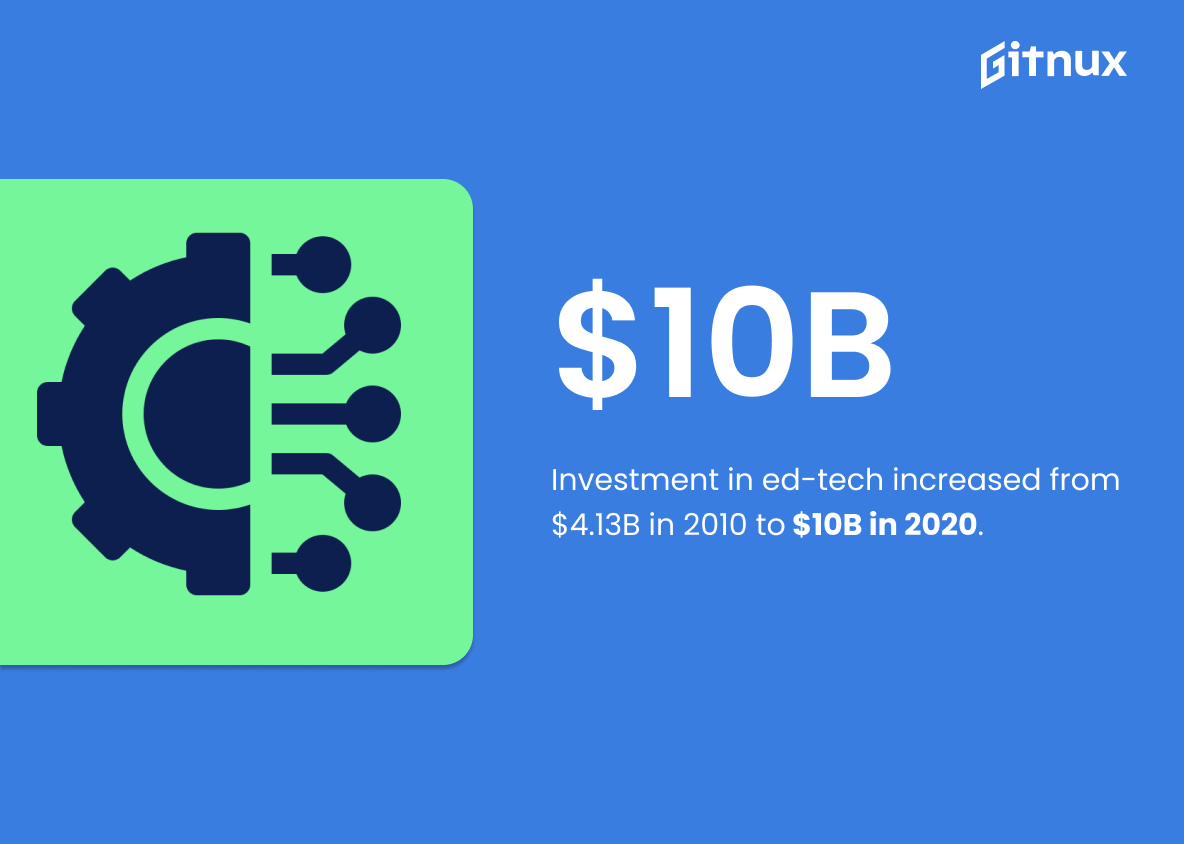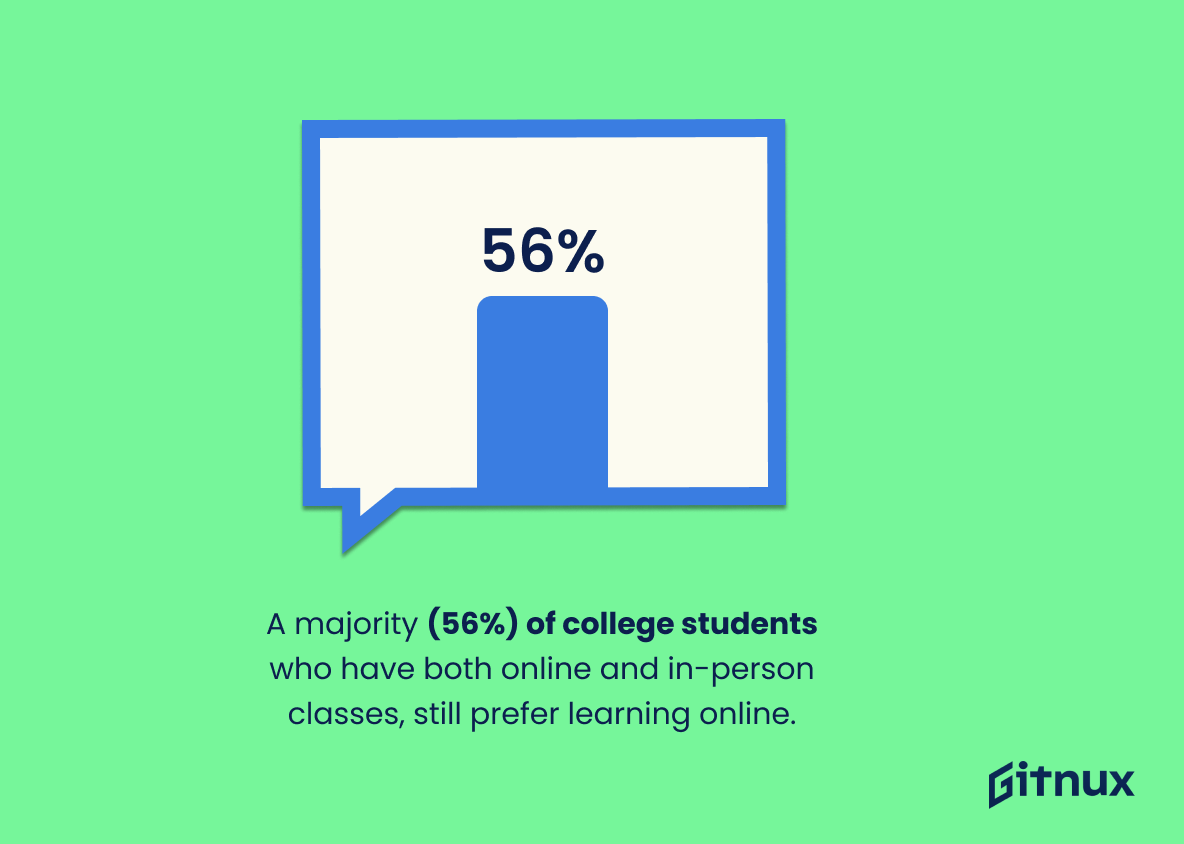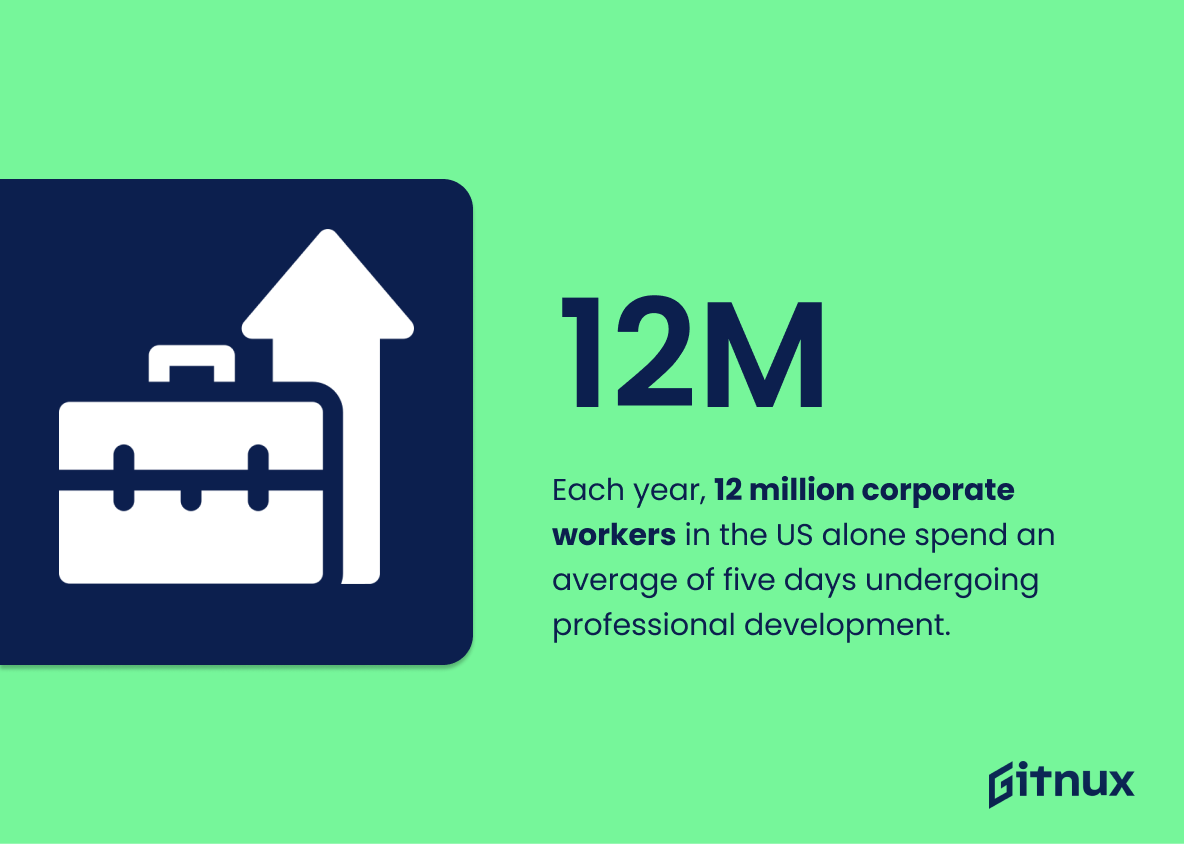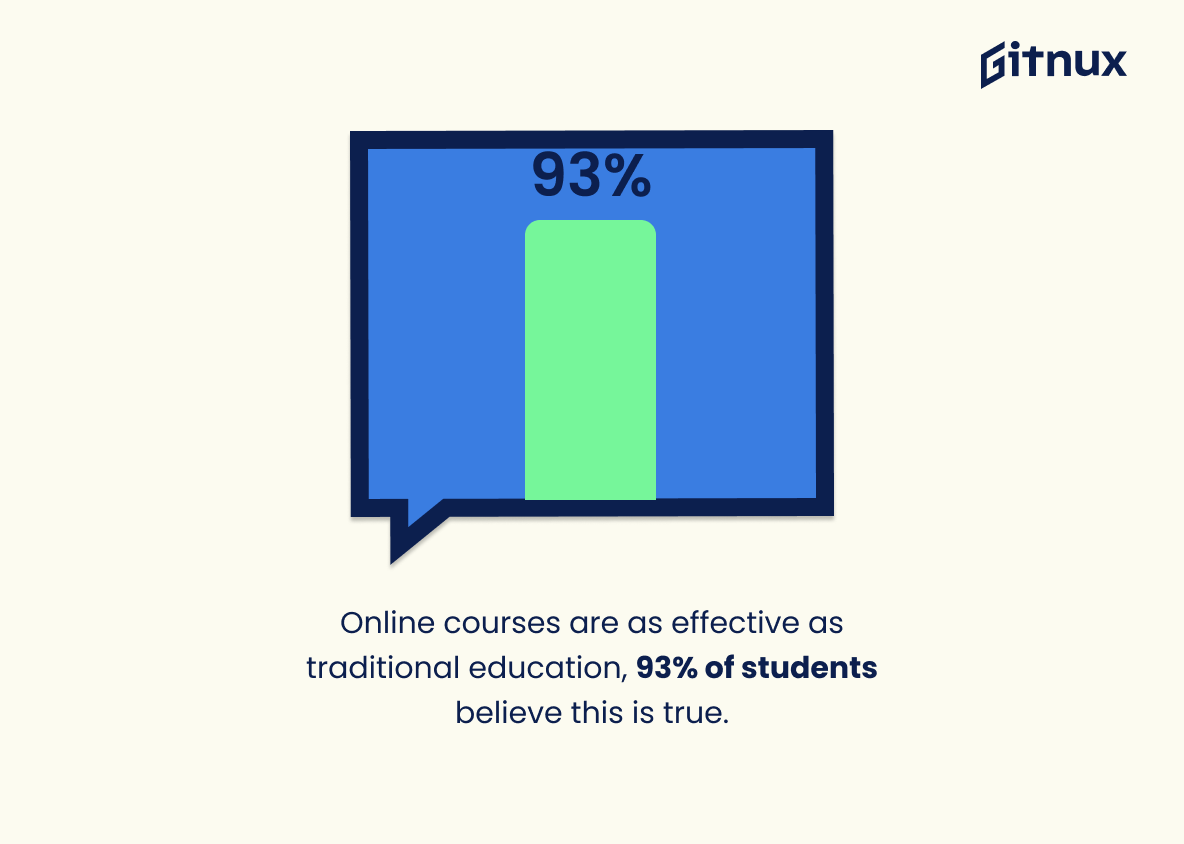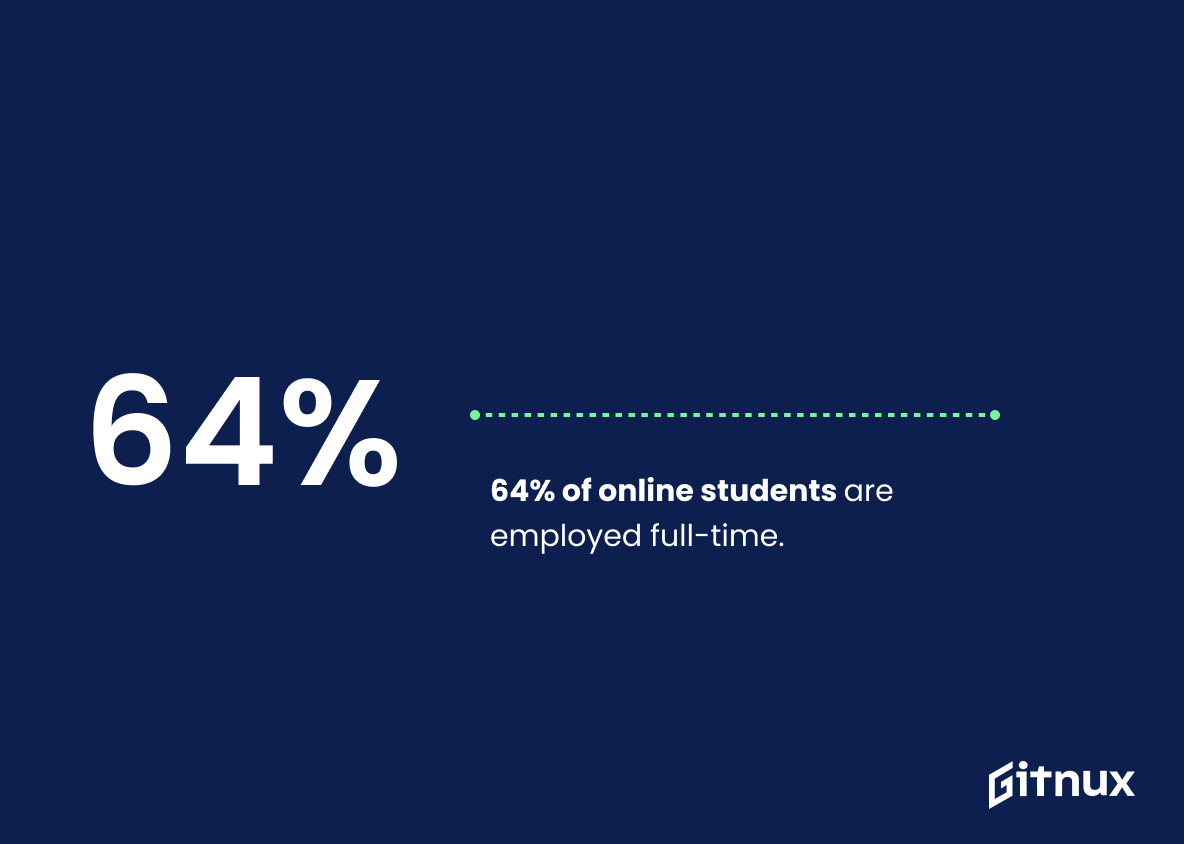In an ever-expanding digital world, the boundaries of education have dramatically widened, breaking outside the conventional classroom walls and venturing into the limitless realm of the internet. Few sectors can bear witness to such innovation and growth as the Online Education Industry. Over the last decade, the field has seen exponential growth, revolutionizing the way knowledge is disseminated across the globe. This blog post dives deep into the ocean of online education industry statistics, giving you a comprehensive understanding of the remarkable trends, significant growth factors, and the potential future of this industry. Whether you’re an educator, student, or investor, these insights could light up the path to your online educational journey or investment.
The Latest Online Education Industry Statistics Unveiled
90% of students worldwide were out of school due to COVID-19, driving an unprecedented surge in online learning. Source: UNESCO
Showcasing the profound impact that COVID-19 has had on the educational landscape across the globe, UNESCO reports a staggering 90% of students worldwide shifting to online learning methods because of in-person school closures. This monumental move enhances the relevance and criticality of online education platforms, prompting the need for detailed understanding of Online Education Industry Statistics. The sheer enormity of this shift not only reshapes the perception of online education but also reaffirms the potential the industry holds for the future, marking it as a focal point of academic interest and investment.
The global online education market is projected to reach a total market size of US$319.167 billion in 2025, increasing from US$187.877 billion in 2019.
Illustrating the sheer dynamism and growth potential of online education, the projected leap from US$187.877 billion in 2019 to US$319.167 billion in 2025 paints a commanding picture of the industry. This seismic shift underscores a transformative power embedded in online learning, capturing its substantial pull within the global education sphere. Situated within a blog post elucidating the trove of online education industry statistics, this projection not only adds perceptible weight about the significant growth trajectory, but also ties a compelling narrative of resilience, adaptability, and uncharted possibilities embodied by this educational format. Certainly, a forecast of such magnitude makes one sit up and pay attention, appreciating the potential that online education has to offer.
The U.S. eLearning market could grow by $12.81 billion between 2020 and 2024.
In the kaleidoscope of online education industry statistics, the forecasted growth of the U.S. eLearning market by $12.81 billion between 2020 and 2024 emerges as a potent testament to the sector’s burgeoning potential. This astronomical surge paints a buoyant picture of a resolute paradigm shift towards digitization in education, magnifying the pivotal role of online learning platforms in sculpting the future of education. It asserts the indisputable realization that eLearning is not just an auxiliary medium, but a dynamic mainstay that is redefining the educational landscape. This impressive projection underscores the enormous investment opportunities, technological advancements, and potential for increased access to education, painting an optimistic picture of the sector’s future.
E-learning increases retention rates by 25-60%, compared to face-to-face training, which only has an 8-10% retention rate.
Undeniably, the standout proclamation, “E-learning increases retention rates by 25-60%, compared to face-to-face training with a meager 8-10% retention rate,” serves as a compelling testament to the efficacy of online education. It unveils an undeniable disparity in retention rates and substantiates the superiority of e-learning over traditional classroom education. Embedded within this data is an extraordinary revelation; the online education industry is not just a convenient alternative, but a critical tool in enhancing the retention capabilities of learners, ultimately fostering enriched educational outcomes. Hence, this statistic serves as the lifeblood of the argument for digital learning platforms, breathing life into the discourse on the evolution of education in the Internet age.
65% of faculty members support the increased use of technology in higher education.
Delving into the realm of online education industry statistics, one cannot ignore the compelling insight that, a substantial 65% of faculty members are championing the escalated use of technology in higher education. This potent piece of data is the bedrock for understanding the evolving educational landscape. As these well-versed educators are key stakeholders shaping academic trends, their backing of technology endorses the growing reliance on digital platforms for learning. This suggests a trend towards a virtual learning environment, illuminating the potential for growth within the online education industry. Hence, this statistic implicitly nods to the anticipated expansion and development of this industry, reaffirming its significance in the offered array of facts and figures.
In 2020, investments in ed-tech companies reached $10 billion up from $4.13 billion in 2010.
Reflecting upon this significant leap in investment figures, it becomes clear that the landscape of the online education industry has witnessed a major evolution within the decade from 2010 to 2020. An investment surge from $4.13 billion to a staggering $10 billion underscores a transformative reality in which digital classrooms have gained exceptional momentum. This data point subtly expresses a powerful education trend and financial bent towards edtech enterprises, speaking volumes about investor instincts on the future vibrancy of the online education realm. Thus, it paints a vivid image of a flourishing industry, inspiring potential investors and stakeholders, while affirming the increasing importance of ed-tech in our increasingly digital, knowledge-driven world.
A majority (56%) of college students who have both online and in-person classes, still prefer learning online.
Peering into the realm of digitized instruction, this compelling statistic serves as the pulse of the ever-evolving academic landscape. With 56% of college students, mixing both online and offline modes of learning, showcasing a clear preference for the digital platform, it acts as a beacon, illuminating potential growth areas for the Online Education Industry.
It underscores the shift in student preferences towards flexible, self-paced learning, allowing educational institutions and edtech companies to gauge and respond to changes. In a blog post about the Online Education Industry Statistics, this statistic isn’t merely a number—it’s a flashing signboard directing industry leaders to the potential for expanded digital offerings. It encourages innovations that enhance online teaching methods, propelling the industry to new heights.
This trend, reflected in the preferences of over half the college student population, sends a clear message: the Online Education Industry is an undeniable force and bound to experience continued growth. It emphasizes the importance of honing digital strategies and investing further in online learning infrastructures, making it an essential statistic to consider when analyzing and discussing the online education landscape.
In 2012, approximately 77% of American corporations used online learning, but 98% planned to incorporate it in their program by 2020.
Through the lens of the evolving digital era, this statistic unveils a remarkable trajectory in the world of American corporations. The year 2012 saw nearly 77% adoption of online learning, a high number in itself, indicating the significant role e-learning was already playing in corporate education. Yet, the truly compelling part is the anticipated leap to a near-total embrace of 98% by 2020. This astounding surge signals a paradigm shift, emphasizing the growing reliance on online learning in business landscapes. As such, it paints a vivid picture of the surging demand and the impelling growth potential in the online education industry. It’s a clarion call towards an accelerating digital transformation, bolstering the argument for deeper investment and innovation within the e-learning sector.
Around 67% of U.S school districts currently offer at least one fully online course.
Highlighting that about 67% of U.S school districts currently offer at least one fully online course serves as a powerful testament to the growing influence and demand for digital learning in the education sector. Such a meaningful portion illustrates the ongoing shift towards virtual learning platforms in the pursuit of flexibility, accessibility and personalized learning. Furthermore, it underscores a vibrant landscape that the Online Education Industry has shaped and continues to influence. This trend, furthermore, provides a valuable insight for online education providers, policy makers, and investors to understand the scale, reach and potential of the online learning market in the education industry. Moreover, it signifies the scope for improvements in technology associated with digital learning, while shedding light on the preparedness and openness of schools towards embracing futuristic modes of education.
Brazil has the second largest eLearning market after the USA.
Showcasing Brazil as the runner-up in the eLearning market, just behind the USA, shines a spotlight on the global traction and potential growth of the online education industry. Not confined to developed nations, the surge of eLearning in Brazil underlines the universality and accessibility of virtual platforms. This illustrates a powerful shift in learning paradigms and signals future market trends, translating to lucrative opportunities for edtech ventures, advertisers, and educators globally. Hence, such insights are invaluable for readers interested in the online education landscape.
Each year, 12 million corporate workers in the US alone spend an average of five days undergoing professional development
Undeniably, the aforementioned metric offers a profound insight into the expansive space for growth and opportunity in the online education industry. The significant figure – “12 million corporate workers” indulging in professional development, highlights the growing demand for continual learning and skills upgrading in today’s fast-paced corporate landscape. This effervescent thirst for knowledge fosters a fertile ground for the expansion and ongoing relevance of the online education sector.
Furthermore, the “average of five days” spent on professional development annually underscores two essential factors. First, it exhibits the time and effort professionals are willing to invest in furthering their knowledge and skills outside their standard work constraints. Second, it suggests that there exists a substantial market for short-term, intensive educational offerings.
Grounding these observations within the blog post context, it can be suggested that online platforms are well-poised to meet these demands by providing flexible, accessible, and comprehensive educational resources capable of bridging the gap between professionals’ skill sets and the ever-evolving corporate world.
Online courses are as effective as traditional education, 93% of students believe this is true.
Diving deeply into the digital education recent revelation, we find an intriguing insight in our statistical exploration: ‘Online courses are as effective as traditional education, 93% of students believe this is true.’
Such a resounding endorsement from the primary stakeholders, the students, is a testament to the efficacy and growing acceptance of online education. This numerical evidence leaps off the page, shining a spotlight on a seismic shift in mindset towards digital learning mediums. When viewed through the lens of online education industry statistics, this particular finding doesn’t just display a trend, it paints a compelling picture of an evolving educational landscape, where digital relevance and academic rigour intertwine.
The convergence of this high acceptance rate with the already burgeoning online education industry gives the sector a turbo boost, potentially paving the way for increased investment, innovation and improvement. Further emphasizing the importance of delivering quality digital education that unlocks new opportunities for learners and educators alike. Essentially, this statistic puts the power of perception into perspective, echoing the students’ voices that affirm the expansion of the online education industry isn’t just a fleeting fad, but a futuristic vision.
64% of online students are employed full-time.
Underlining the vibrancy of e-learning, this fact enriches the narrative on the Online Education Industry by highlighting the intersection of employment and education. It expands the portrait of the online student, not as a traditionally unemployed academic, but as a busy professional balancing work and learning. This statistic provides a cornerstone for understanding the shift in education paradigms, indicating a trend of full-time working professionals pursuing online education for career advancement or skill enhancement. With 64% of online students also being fully employed, it affirms the flexibility of online learning, accomodating the schedules of those leading a working life. An understanding of this shift thus becomes pivotal in outlining the current landscape and future direction of the online education industry.
The revenue of Coursera reached $140 million in 2018.
Reflecting on the immense growth of Coursera, a leading platform in the online education industry, it’s eye-opening to learn that it swelled to a staggering $140 million in revenue in 2018. This financial milestone not only illustrates Coursera’s success but is also indicative of the booming e-learning sector. In an atmosphere where digital platforms are reshaping education, such impressive revenue provides a concrete example of the transformation happening in the industry. From investors looking for lucrative opportunities to educators considering a transition to digital platforms, this numerical testament of Coursera’s revenue can serve as a motivation for individuals to embrace and invest in online education.
More than 30% of students worldwide are currently enrolled in at least one online class.
Shining a spotlight on the fascinating world of digital education, the rise in students choosing to participate in online classes is not just a subtle trend, it’s a worldwide educational revolution. The compelling statistic illustrating that over 30% of students globally are currently diving into online education, echoes the phenomenal growth trajectory of the online education industry. This explosive increase in the popularity of online classes, reflects a seismic shift in how the next generation opts to learn, underscoring the importance of the online education sphere. As we delve deeper into the recesses of the online education industry statistics, this noteworthy piece of data serves as a clear indicator of the savviness of an increasingly tech-interconnected cohort and the boundless possibilities for the educational terrain in the foreseeable future.
About 60% of employers generally reject a job candidate if they don’t have basic computer skills, including Microsoft Word and Excel
Highlighting the statistic that around 60% of employers commonly dismiss potential employees lacking essential computer skills, such as proficiency in Microsoft Word and Excel, serves as a motivational beacon for readers. It elucidates the significant role that online educational platforms play in equipping students and professionals with indispensable digital competencies. In a digitally-driven job market, these virtual learning landscapes offer an accessible route to gain robust computer skills, bridging the disquieting gap between job expectations and candidates’ capabilities. Consequently, the strength of online education lies not just in traditional academics, but also in pragmatic, career-specific proficiencies. Therefore, this statistic underscores the importance of online education in shaping a competitive workforce ready to meet the demands of modern employers.
In 2019, 6.9 million students in the US were enrolled in distance learning.
Reflecting on the sheer volume of 6.9 million students embracing distance learning in the US alone in 2019, one can sense the pulsating vibrancy in the online education industry. This number, rather than just a statistic, illustrates a compelling narrative of an education revolution, indicating a significant shift in learning paradigms. Imagine, each of these millions represents a unique learning journey, threaded together by the power of digital connectivity. This wave of digital learning not only points to the vast scalability of online platforms but also underscores their increasing acceptance, positioning the online education industry as a formidable player in the learning ecosystem.
Conclusion
In conclusion, the online education industry has experienced exponential growth over the past few years and it is expected to continue on this upward trajectory. With advancements in technology and changing lifestyle habits, more and more people are realizing the benefits of online learning. The increasing investment in education technology is a testament to the viability and potential of this industry. In an age characterized by the democratization of education and lifelong learning, online education has opened up new avenues for learners and educators alike. The statistics highlighted above not only shed light on current trends but also indicate the immense promise that the online education industry holds for the future. Regardless of your place in the world of online education, these numbers and insights can help shape strategies and decisions moving forward.
References
0. – https://www.www.learninghouse.com
1. – https://www.campustechnology.com
2. – https://www.news.elearninginside.com
3. – https://www.www.knowledge-sourcing.com
4. – https://www.www.gettingsmart.com
5. – https://www.www.classcentral.com
6. – https://www.e-student.org
7. – https://www.elearningindustry.com
8. – https://www.en.unesco.org
9. – https://www.www.shiftelearning.com
10. – https://www.nces.ed.gov
11. – https://www.www.pewresearch.org
12. – https://www.www.onlinecollegeplan.com
13. – https://www.www.coveo.com
14. – https://www.www.technavio.com
15. – https://www.www.census.gov
16. – https://www.www.edtechreview.in
